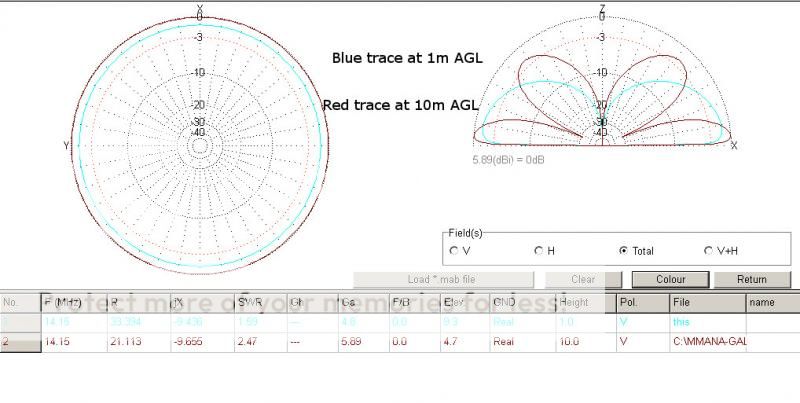I see a number of issues on this particular section of the forum with regard to antenna modelling software and real World results. Let me start by saying I am a rank amateur when it comes to modelling software, I use freely available software and play at it, and maybe learn something along the way.
I know we can't account for everything real World that may affect an antenna, but we can use modelling to help us understand what's happening and plan our installations accordingly.
Here's a post I made on an anateur HF mobile yahoo group I'm a member of, I've added brackets and italics is to help explain the post a little :
What the model has done is help me understand why one backpack location suffers such high levels of splatter from EU stations and the other doesn't, they are both on the same section of coast, no more than 5 miles apart North/South, but the difference can be day or night when it comes to QRM. For info our backpack pedestrian mobile kit is almost identical, 100W, 1/4WL antennas, small batteries and a great take off for Oceania / USA
I know we can't account for everything real World that may affect an antenna, but we can use modelling to help us understand what's happening and plan our installations accordingly.
Here's a post I made on an anateur HF mobile yahoo group I'm a member of, I've added brackets and italics is to help explain the post a little :
I'm pretty sure we've discussed this before, about height above the sea and the anecdotal benefits some have observed. Well tonight I decided to model and compare a 20m 1/4WL ground plane antenna at 1m and 10m high respectively, now considering the sea makes an almost perfect groundplane I was surprised to discover the large difference between the two heights, I've uploaded an image to the forum under my callsign for you to see, and below is a link to the image on photobucket:

The lobes and pattern of the antenna at 1m AGL are those that I'm more familiar with, that is, when I've been experimenting with the antenna modelling software I've always placed the antenna within 1m, usually 0.5m, above the sea as a good number of us operate from the beach, now there's nothing wrong with this, the antenna produces gain, has a very low take off angle and the benefit is supported by the many hours people have spent on the beach DXing. However it doesn't go unnoticed that the raised location close to Dave (My friend G4AKC) and myself has an advantage, I've experienced this numerous times, both with others and by myself when I've walked onto the beach and to the waters edge, in the hopes that I may squeeze a little more decibels out of the salt water location, however I've never seen an improvement, in fact I always thought it was worse, not by much, but enough to know I prefer operating from the high wall location.
Well the comparison in the image would seem to back this up, not by a huge amount and not necessarily something you'd see on an S meter, but a bigger difference than I had assumed. If we want to squeeze every decibel out of the system and our signal then the high ground takes the trophy, however in the image and the data below there is a flaw with being so high:
1m AGL, at 1 degree elevation 1.5dBi, 4deg elev 4.4dBi, 24deg elev 3.8dBi, 48deg elev -0.9dBi
10m AGL at 1 degree elevation 3.2dBi, 4deg elev 5.9dBi, 24deg elev -24.9dBi, 48deg elev 4dBi
At 24 degrees elevation the 10m AGL antenna has a whopping -28.7dBi disadvantage in comparison to the ground level antenna, this is because the pattern of the 10m high antenna has split into two distinctive lobes, a very low high gain lobe, a very deep null, and a high gain high angle lobe. Now there have been many times when I've been in my car at Fairhaven lake and absolutely swamped by an EU station close by the frequency, and Dave on the high wall can hear the station, but isn't bothered by it too much, I've just checked some arrival angle statistics and can see that signals from the EU arrive into the UK between 7 and 25 degrees elevation, at 16 degrees the antenna at 10m AGL has almost 0 gain, whilst the lower antenna is still around 4.5dBi, if we now factor in the clear sight to the East from Fairhaven lake, and the cluttered take off from the high wall, it's easy to see why the high wall location wins again, in fact the high wall is beginning to look more and more like the perfect location, as if we didn't already know it.
What the model has done is help me understand why one backpack location suffers such high levels of splatter from EU stations and the other doesn't, they are both on the same section of coast, no more than 5 miles apart North/South, but the difference can be day or night when it comes to QRM. For info our backpack pedestrian mobile kit is almost identical, 100W, 1/4WL antennas, small batteries and a great take off for Oceania / USA
